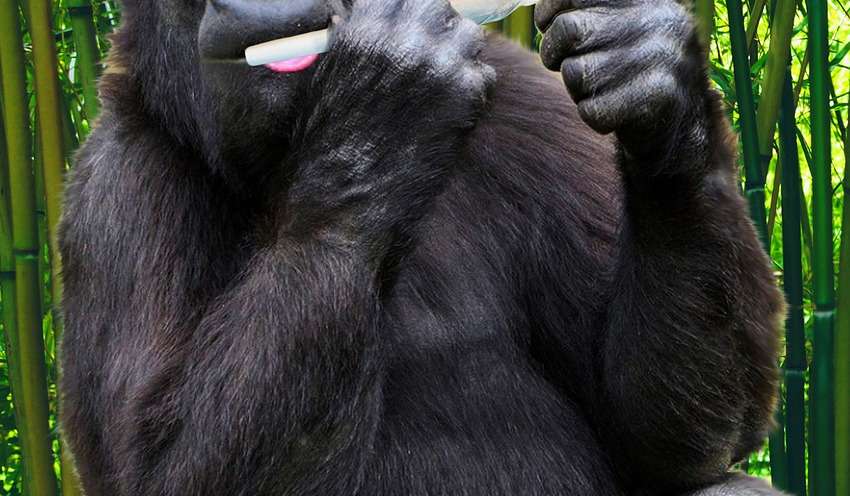The laws governing the use and distribution of medicinal marijuana are undergoing some major changes across the United States. So too are the laws concerned with recreational use. With weed decriminalized in 22 states already, it’s feasible to assume that the winds of change will continue to sweep across the nation.
Marijuana use is slowly becoming more accepted, researchers continue to explore the potential medicinal properties of cannabinoids and oils, and more is written about weed than ever before. In light of this, we look backwards at some media snapshots that illuminate the path marijuana has followed from being labelled a “pleasurable and harmless stimulant” to being the subject of one of 2007’s most popular jokes.
Let’s begin with one of the most richly-ironic news stories of the noughties.
Sanchez and the Brownie Saga
In 2007, a Michigan police officer put a call through to 911 from his private residence. During the course of the call – which is available in full online – 29-year-old Edward Sanchez told the operator that he and his wife had eaten brownies made with weed and believed that they were ‘dying’ or ‘dead’. “We made brownies and I think we’re dead, I really do”. The bitter-sweet call ends when officers reach the house and a somewhat perkier-sounding Sanchez (not dead enough that he couldn’t check the game score with the operator) informs dispatch that his mother-in-law had “just arrived too.”
Sanchez the cop and his weed brownies saga is an internet-era tragicomedy: the comedic value is clear; the tragic elements are testimony to the lack of education surrounding marijuana use.
State and federal laws from the 1930s and earlier made marijuana consumption a subject that many users did not talk openly about outside of the counter-culture.
The Times They Were a-Changing
Things weren’t always this way. The weed prohibition era was ushered in from 1911 when Massachusetts laws changed, requiring a prescription for sales of ‘Indian Hemp.’ A domino effect followed this initial legislation and state laws changed swiftly throughout the early years of the 20th century.
In part these law changes were linked to the influx of Mexican immigrants into the U.S. following the 1910 Mexican Revolution. According to the popular narrative, the recreational use of marijuana was introduced into American culture by these newcomers. The “Marijuana Menace” was seen as a very real threat by conservative Americans.
Cartoons featuring caricatures of heavily-moustached, joint-smoking Mexicans became a newspaper staple, and headlines such as this one were emblazoned across front pages nationwide:
In line with this smear campaign, prejudices against the Spanish-speaking arrivals ran high.
This 1915 article in Utah’s ‘Ogden Standard’ refers to a “peculiar weed”, but what’s really peculiar is that marijuana had been a staple in US druggists for a number of years. Recreational marijuana use did not arrive with Mexicans, it was there all along, hidden underneath a veneer of respectability in medicinal form, and as we’ll see later, just plain hidden.
Get ‘Locoed’ for 2c at the Druggist
It’s well-known that the Victorian-era upper classes had a penchant for opium tinctures that blurred the lines between the medicinal and recreational. Languishing on laudanum was an all too common affliction and English writers such as De Quincey and Coleridge described the effects, allures, and desperations of opium use.
But opium wasn’t the only player in the respectable-high sphere at this time, marijuana was also widely available in a variety of tinctures, tablets, and even lollies. An advert in an 1862 Vanity Fair proclaims Hasheesh Candy to be “a pleasurable and harmless stimulant”, “a most wonderful medicinal agent” which when imbibed causes “all classes … to gather new inspiration and energy” under its influence.
For sale in Vanity Fair in 1862: Pianos, dry-goods, hash candy.
From 1840 to around 1900, cannabis use had a heyday. More than 100 medical papers were published by physicians that recommended the drug for various sicknesses and malaises, including that of ‘hysteria’. It is even possible that Queen Victoria, a bastion of respectability, was prescribed a marijuana tincture for menstrual cramps.
Inside the ‘Hashish House’
“Looking about I found myself in a huge cave, dark and noisome. Serpents hissed and glared at me from every side, and huge lizards and ugly shapes scrambled over the wet floor. In the far corner of the cave I saw piles of precious stones of wondrous value that glanced and sparkled in the dim light. Despite the horrid shapes about me, I resolved to secure some, at least, of these precious gems.”
– A Hashish-House in New York, H. H. Kane, Harper’s Monthly, Vol. 67 (November, 1883)
In the excerpt above H.H. Kane, writing for Harper’s, describes the “hashish dream” he fell into while discovering a ‘Hashish-House’ in New York city. In florid and passionate prose (which seems more than a little indebted to Coleridge’s Kubla Khan and every Orientalist text ever written) he tells of the ‘pure leaf coca tea’ and shisha pipes on offer in the den which he and his companion partake of.
What is of particular interest in this article is the discussions around the clientele. “Are there many ladies of good social standing who come here?” Kane asks his companion, who promptly replies that there are “very many.” He goes on to ask if the “habitues of this place of the same class as those who frequent the opium-smoking dives?” and is informed that isn’t the case and that “all the visitors, both male and female, are of the better classes, and absolute secrecy is the rule”.
That these hidden-away hashish houses and ‘tea pads’ were frequented by a cross section of society runs counter to the assumption that widespread marijuana usage didn’t exist prior to 1930. In fact, until recently, scholarly literature on the subject was hard to find.
As the writers at Points, (an academic blog devoted to the history of alcohol and drugs) show, failing to acknowledge the dedicated marijuana-using community leaves large gaps in the story of weed, and our history of how we use it.
A Final Thought
As our collective knowledge of marijuana use increases, so too will the media and texts that surround it. A quick google search these days reveals a plethora of information, and we’re sure this is only going to increase as weed stays firmly in the spotlight of public consciousness.
Please don’t take anything you read here as medical or legal advice. If you need medical or legal advice, consult a doctor or lawyer. The articles and content that appear on this website have been written by different people and do not necessarily reflect the views of our organization.


